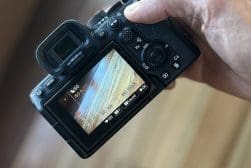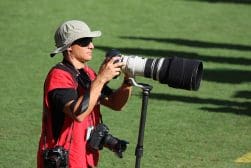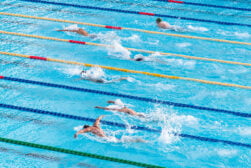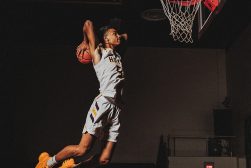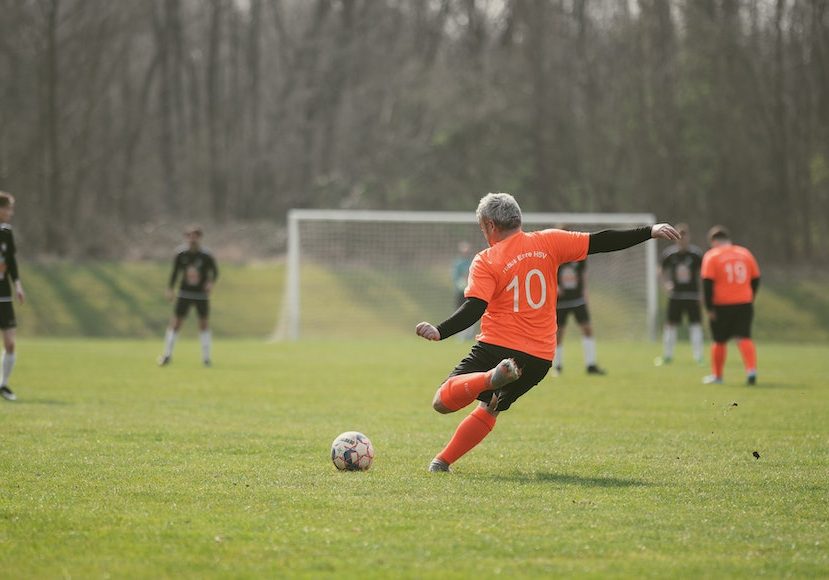
Improve Your Soccer Photography With These Pro Tips
Master the art of capturing stunning soccer moments with our photography tips designed to elevate your sports shots to the next level.
Learn | By Ana Mireles
If you’re looking for soccer photography tips, you’ll find plenty of them here.
Whether you’re a professional photographer or an amateur looking to shoot your children’s games, there’s a sports photography tip for you.
I’ll cover all the basics, from the right equipment to the main camera settings.
More than a cheat sheet, you’ll find the answers to the most common questions – from ISO settings to fps seed.
I’ll also talk about the advanced settings, such as burst mode and how to set up the autofocus.
Then, I’ll move on to the must-have shots and other ideas.
I’ll even include some posing tips for the athlete’s portraits and great group photos.
To wrap things up, I’ll give you some extra tips to overcome the most common challenges in soccer photography.
Are you ready to start? Let’s kick this off!
Table of Contents
11 Soccer Photography Tips: How to Shoot Soccer Games
1. Set yourself up for success with the right camera gear for soccer photography
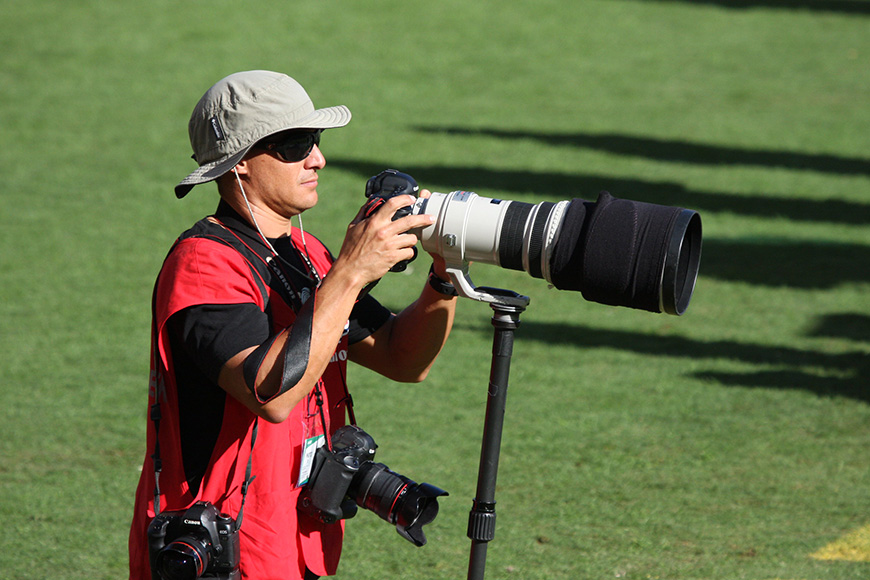
Credit: Nathan Rupert, CC BY NC ND 2.0, via Flickr
Cameras.
Often, sports photographers carry two cameras – each one with a different focal length. But how do you know which camera is best for soccer photography?
It doesn’t matter if you use a DSLR camera or a mirrorless. What’s important is that it has fast fps because you’ll find yourself shooting in burst mode very often. You should aim at a minimum of 6fps – more is better, though.
The focus speeds are also important. If you want to capture a fast-moving player, you’ll need a camera with an auto-focus system that reacts quickly and accurately.
See also the best camera for sports photography.
Lenses.
Soccer photography is divided into two ranges of lenses- the far range and the short range. Most photographers like to use a zoom lens to have more flexibility.
This is considering that there’s enough light, such as outdoor fields during the day, because zoom lenses have a smaller aperture. Otherwise, you may prefer a prime lens so you don’t have to crank up too much the ISO.
You’ll want telephoto lenses to capture facial expressions and get closer to the action from your position. Some popular zoom lenses are the 100-400mm, 200-500mm, or 160-600mm. Using these focal lengths, you’ll cover half the field and even two-thirds.
For the shorter range, you can use something like 70-200mm. Using the best lenses for sports photography, you can capture all the action that’s happening close to you, portraits and some environmental shots.
Monopod.
A monopod is an integral part of soccer photography camera gear. When you use a longer lens, you’ll need support to reduce camera shake. You’ll also be less tired at the end of the game. Choose a monopod with a ball head to reframe quickly.
2. Dial in the best exposure settings for soccer photography
Manual mode will give you further control of your images. The shutter speed regulates how you capture movement.
Generally speaking, when you’re shooting a soccer match, you’ll want to freeze the subject. So, you’ll need a fast shutter speed.
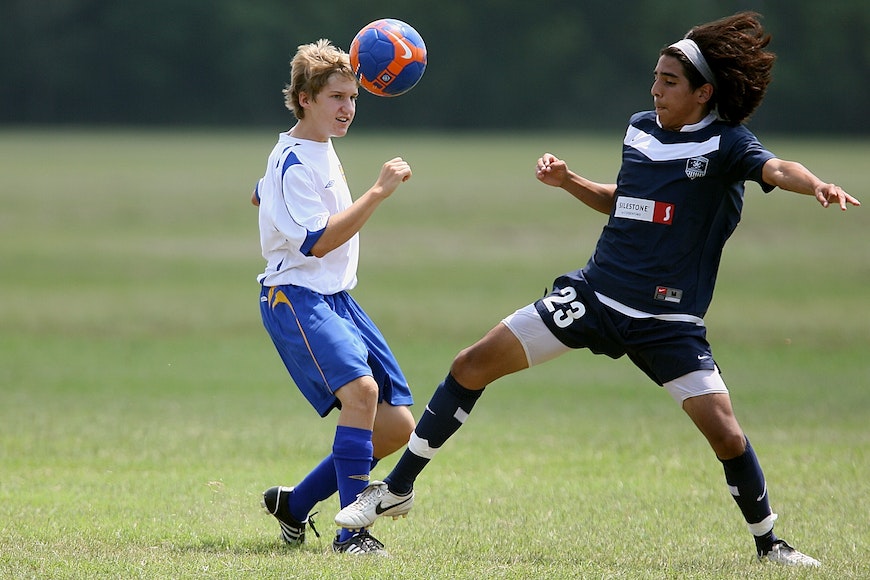
Shutter Speed: 1/1250. Credit: Pixabay
However, if you want to get creative shots, you may want to try techniques like panning. This way, you can introduce motion blur. To do this, you’ll need a slower shutter speed.
The aperture, on the other hand, controls the depth of field. So, the aperture you choose depends on whether you want to focus only on one player or a full group.
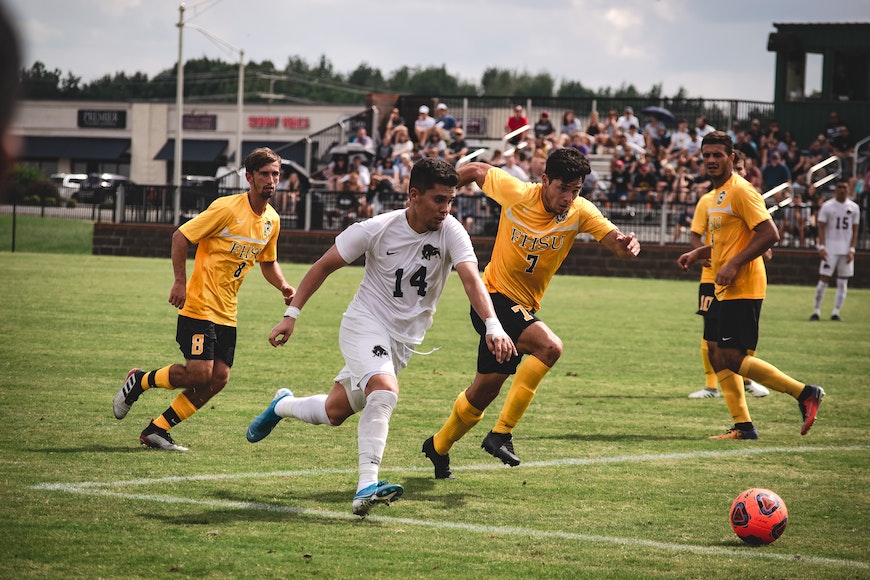
Aperture f/4.5. Credit: Stanley Morales
The widest aperture is ideal to focus on a single player – something like f/2.8 or f/4 will do. If you want a slight increase in depth of field to capture more players, then use an aperture of f/5.6 or f/6.3.
The ISO depends on the lighting conditions. Keep it as low as you can so that you can control the other two factors for creative purposes.
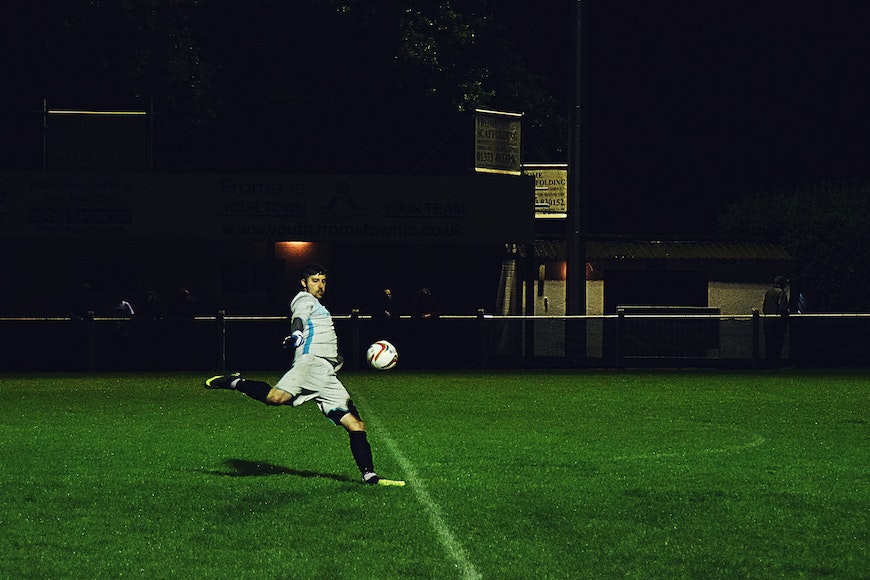
ISO 6400. Credit: Zac Frith
Having said this, let’s clarify some of the most common questions people have about shooting soccer photography.
What is the best ISO for soccer?
To avoid digital noise, you want the lowest ISO. If the available light allows it, use 100 or 200 ISO. Otherwise, you’ll have to raise it enough to compensate for the shutter speed and aperture – both of which get priority in soccer photography.
What is the best shutter speed for soccer?
Generally speaking, you shouldn’t go below 1/500 to freeze soccer players in motion. This obviously depends on the situation, but 1/500 is a good starting point. Anything lower than that could get you some motion blur. Of course, if the lighting conditions allow it, use a faster shutter speed.
See also the best shutter speed for sports.
What FPS is good for sports photography?
The idea of continuous shooting mode is that you don’t miss the action. So, the more fps you have, the better. However, this feature can be expensive. So, try to get a camera with at least 6fps.
Should I use auto ISO for sports photography?
Yes, auto ISO is a great feature in soccer photography. Spend your energy on shutter speed and aperture – let the camera take care of the ISO.
Why are my sports photos blurry?
Blurry images mean that you’re not using a shutter speed high enough to freeze the movement of the players or the ball. It may also be because of camera shake – longer lenses require a monopod to get sharp images under a certain shutter speed.
What mode do sports photographers use?
For fast-action sports such as soccer photography, renowned sports photographers tend to shoot in burst mode. Obviously, you need good timing – you can’t use it the entire game.
What picture style is best for sports?
The style depends on your creative vision and the standard of the publication you work for. However, good contrast and vivid colors are usually appreciated.
3. Using burst mode (continuous shooting mode) to capture more in-focus soccer photos
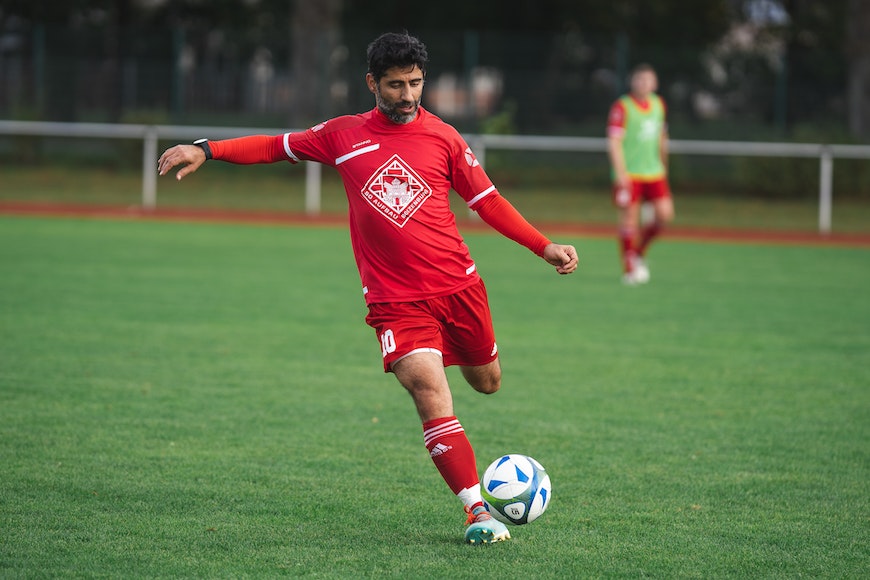
Credit: Omar Ramadan
If you want the best soccer photos, you need to use continuous shooting. Instead of getting one shot when you press the shutter button – you’ll get multiple shots.
You don’t have to worry about missed opportunities. How great is that?
It does have a downside, though. You’ll be shooting so many photos per second that you can’t spend the entire 90+ minutes using it.
You need to know the game to anticipate when the action is about to happen. You’ll also fill more memory cards, and you’ll spend more time culling.
So, find a good balance between single shots and multiple shots.
4. Don’t forget about the focus mode
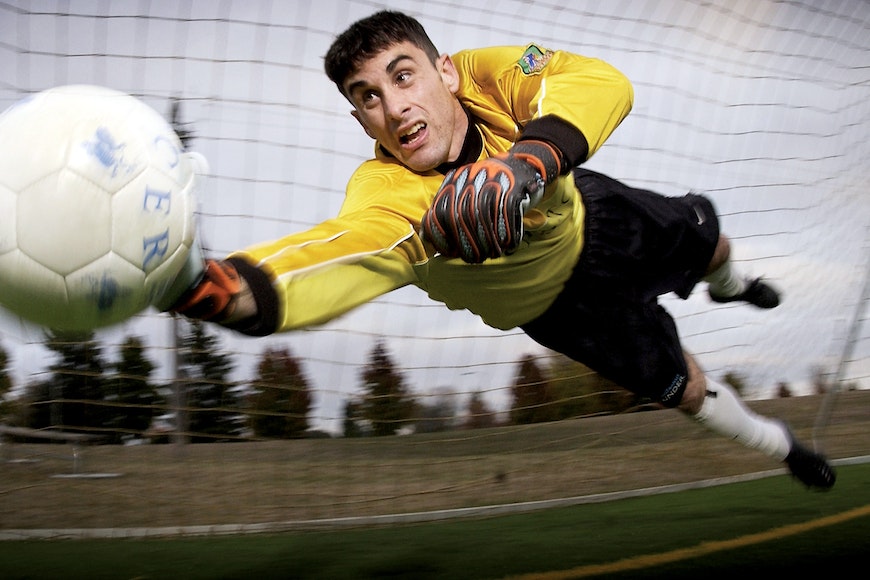
Credit: Pixabay
The main soccer photography tips regard camera focus modes due to the fast and constant motion of the players. You need to use continuous focusing mode (AI Servo on Canon).
The focus points are tricky. You need to consider the composition of your image. Working with subjects that move in a zig-zag or randomly, it’s often best to choose a zone instead of a single point.
However, this may be different on each camera as they have different performance.
5. Actions and expressions during a soccer match
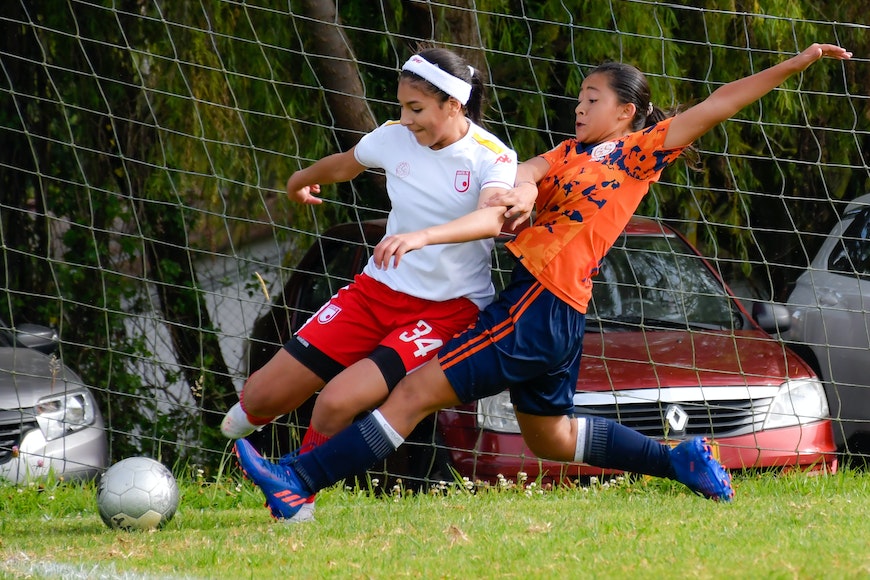
Credit: Laura Rincon
It may sound obvious as part of the soccer photography tips, but it’s key. This is why you need a long lens to fill the frame with the subject. That’s also why you should use continuous shooting mode, so you capture the best photos.
Another pro tip is that you should look for those moments when the player is looking at the teammate who is going to receive the ball or the goal line.
Most of the time, soccer players run looking down at the ball. So you won’t be able to see clearly at their faces. Anticipate the moment when they look ahead or when they look up to receive the ball.
6. Reactions, both positive and negative
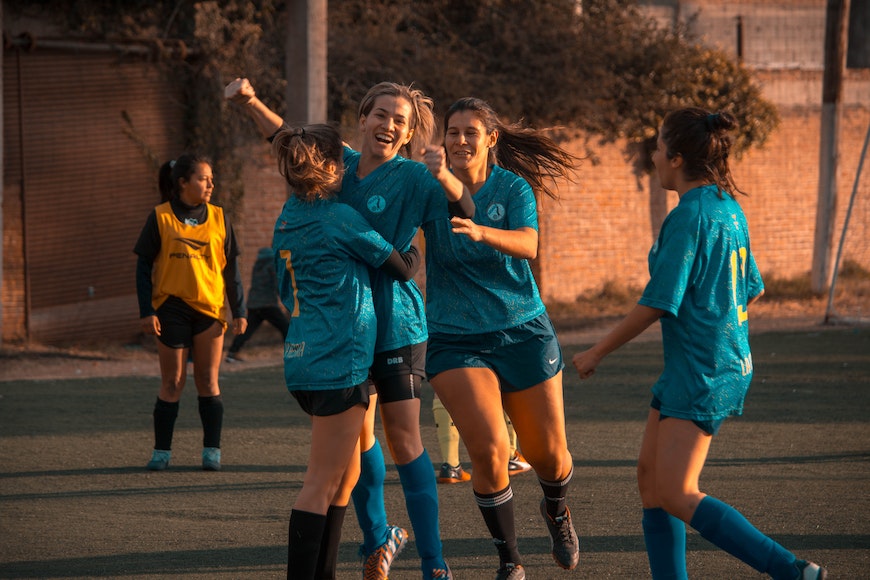
Credit: Mica Asato
Have you noticed how it’s more exciting to see a soccer match when you’re a fan of one of the teams? That’s because you’re emotionally involved.
This is the sort of engagement you want to get with your soccer photography. Maybe the viewer is not a fan of the team or player you’re focused on – however, communicating the emotion of the moment will get them more excited.
This is why capturing reactions from the players and even from the audience is key to making great photos. After an action, there’s always a reaction that’s worth shooting.
7. Dealing with various lighting conditions during a soccer game
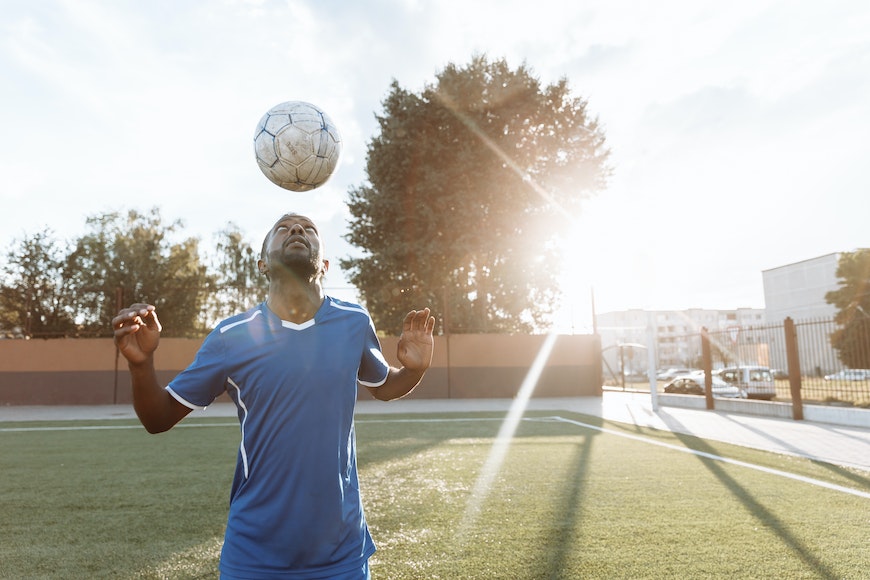
Credit: Thirdman
Soccer matches can happen in the daytime, at night, in well-lit stadiums or small school gyms. You’ll face different light conditions, and you need to be able to handle all of them.
The weather plays a big part in the lighting situation. Even in the daytime, it’s not sure that you’ll have plenty of sunlight.
Use the camera settings to compensate. A fast lens and a camera that performs well in low light are helpful.
8. Environment
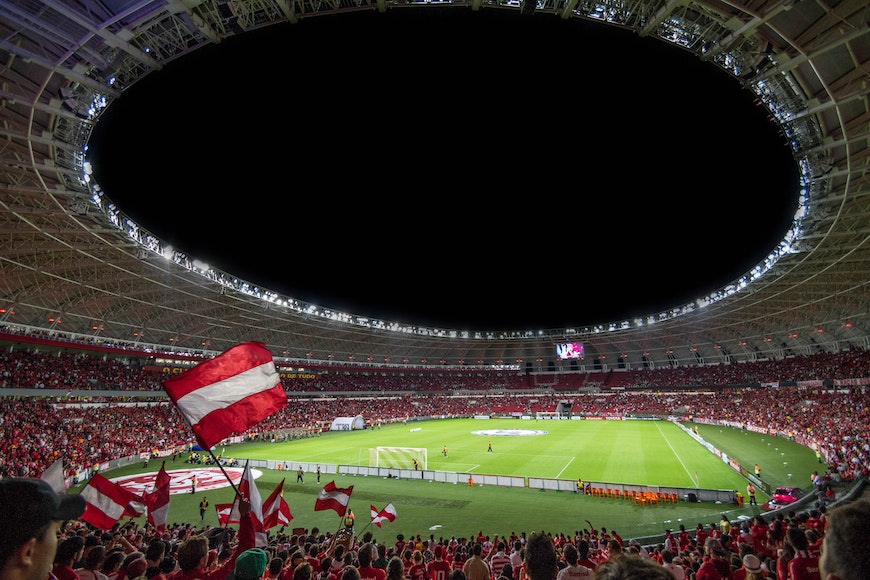
Credit: Riccardo
Part of this beautiful game is the atmosphere. Turn yourself to the crowd and photograph them as well. Take some environmental photos where you can see the field or the stadium to give the viewer a complete sense of what’s happening at the game.
9. Close-ups
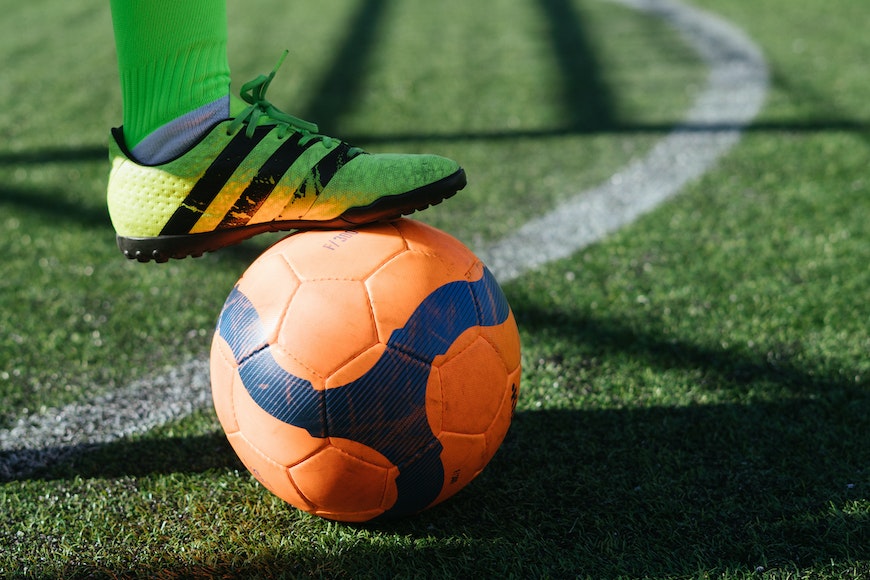
Credit: RF Studio
While we’re at it, you don’t just need a wide field of view to show the complete picture – close-ups are helpful too.
From the soccer ball to the facial expression of the player – get close for the best images.
10. Position and perspective
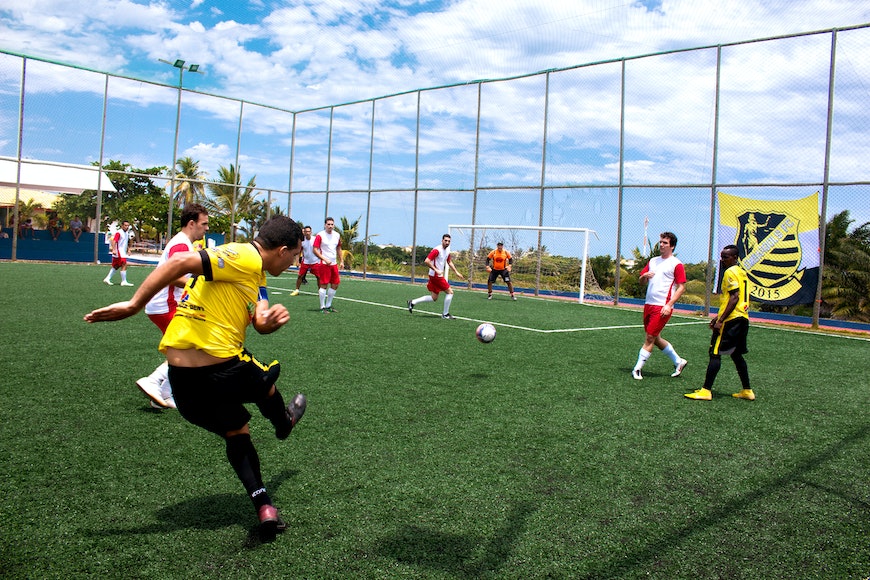
Credit: Lucas Andrade
If you’re shooting in an outdoor field during the day, your best bet is to position yourself with the sun in your back.
Another tip is that you should get low on the ground for more impactful images. Try to avoid shooting at eye level.
If you’re looking to capture a specific team or player, you need to find your position in relation to theirs. Otherwise, you should find the best spot to have full coverage.
Here are a couple of ideas:
Shoot at the centre line. This is a good place to cover a bit of both team’s offence and defence. You’ll mostly capture players running left to right and vice-versa from this point.
On the corner behind the goal. If you want to get players from the front, you should position yourself on the short side of the field. Since most of the players are right-handed, they’ll mostly go to the right corner to shoot on the goal.
11. Soccer photography poses
Other than action shots, you can do some portraits of the teams or the individual athletes.
Here are some soccer poses to get you inspired.
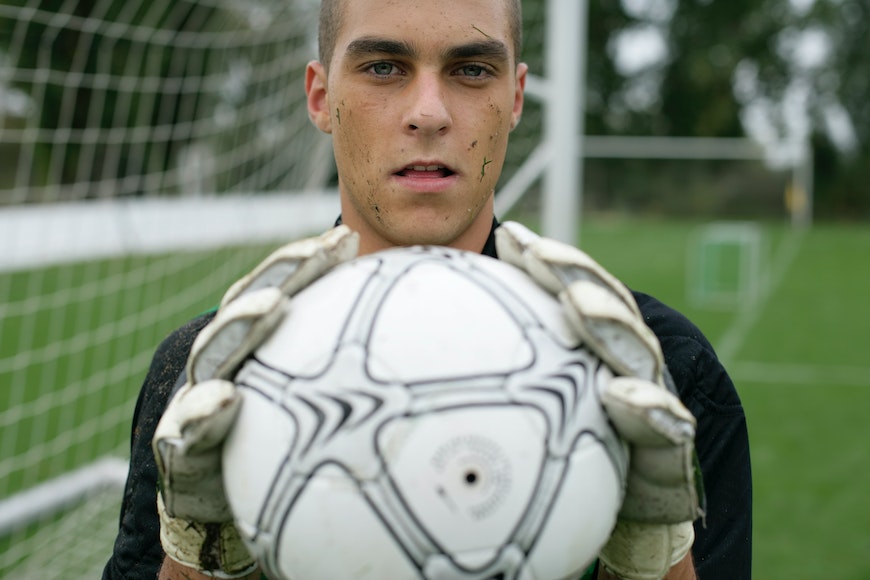
Credit: Boom
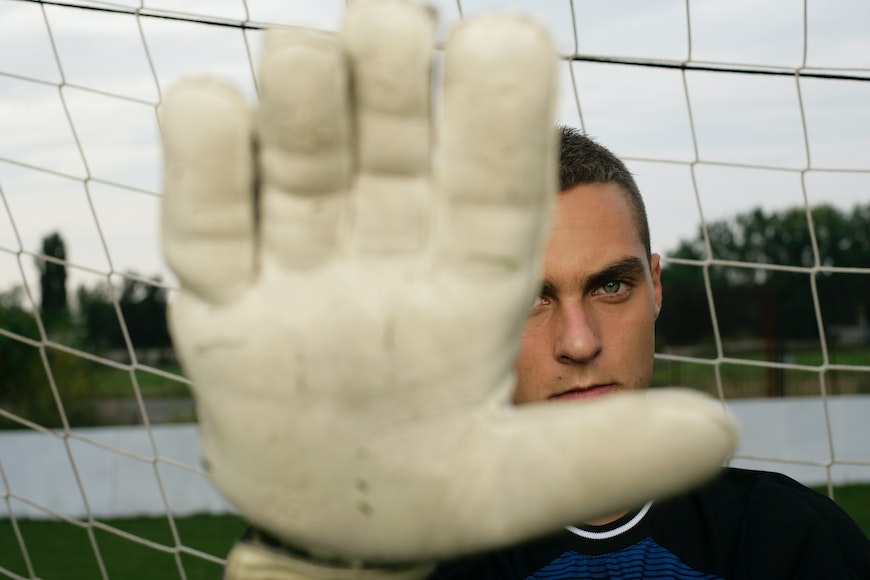
Credit: Boom
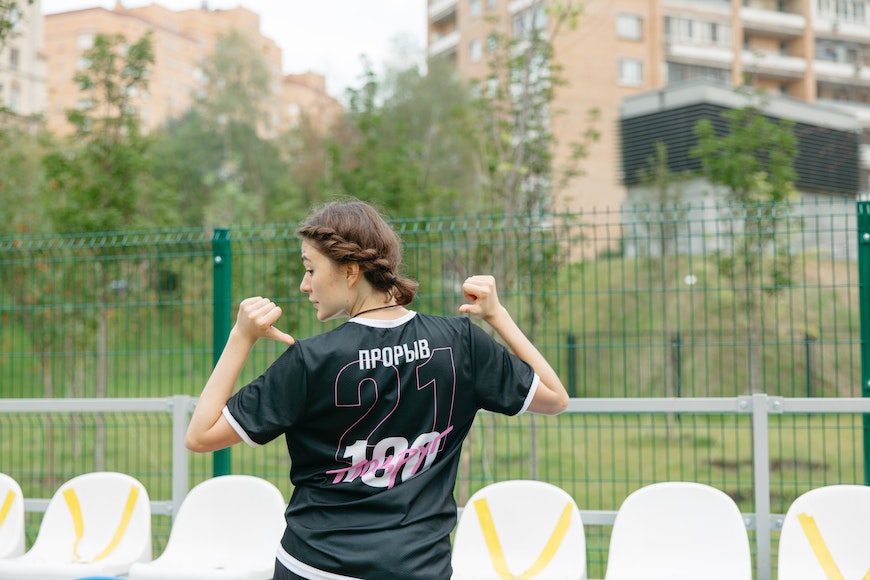
Credit: Anastasia Shuraeva
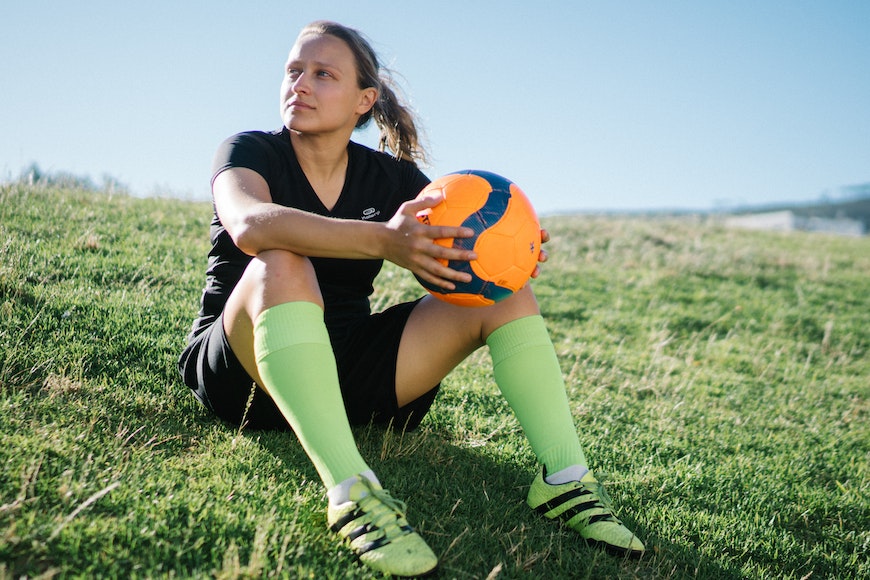
Credit: RF Studio
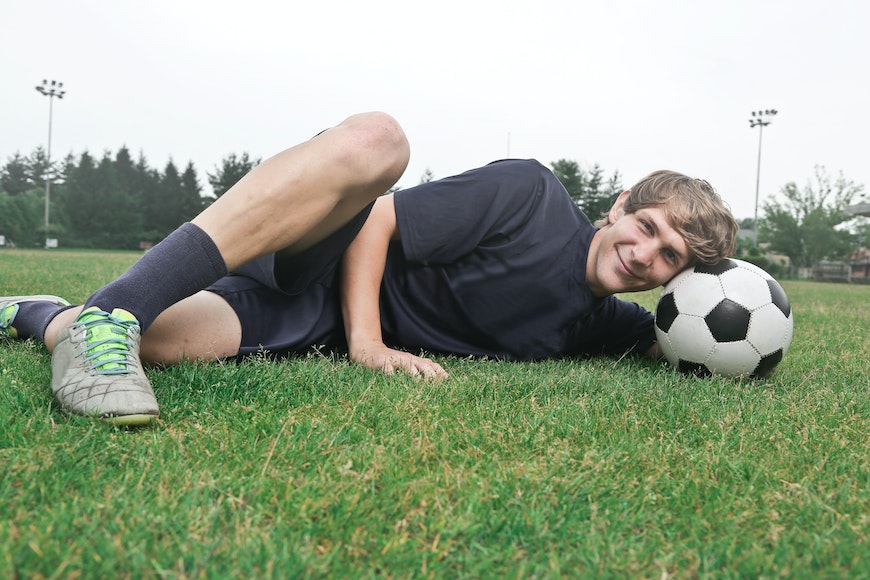
Credit: Andrea Piacquadio
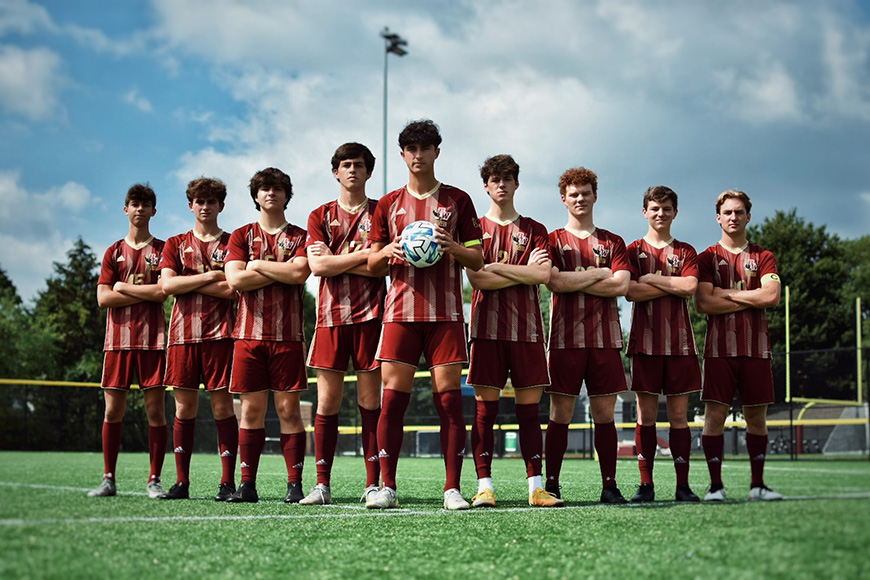
Credit: Leah Heeteberg
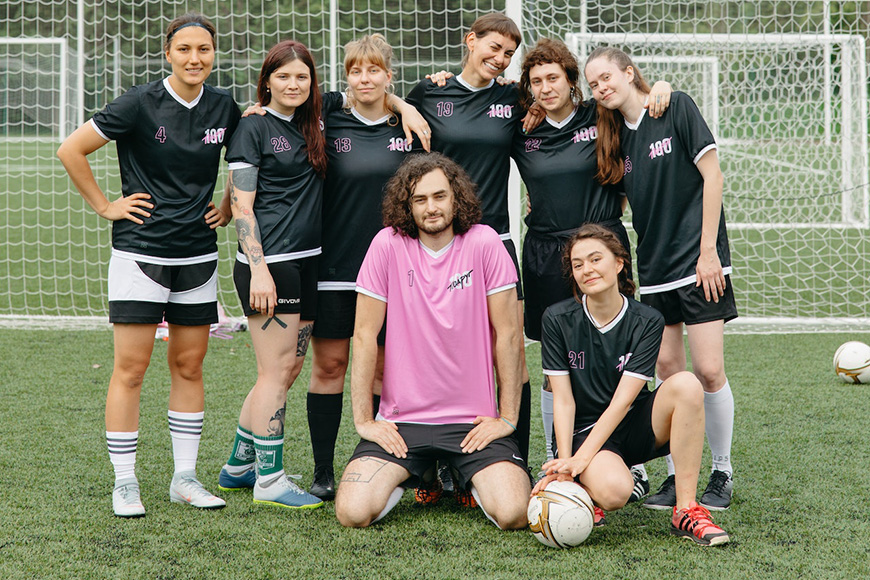
Credit: Anastasia Shuraeva
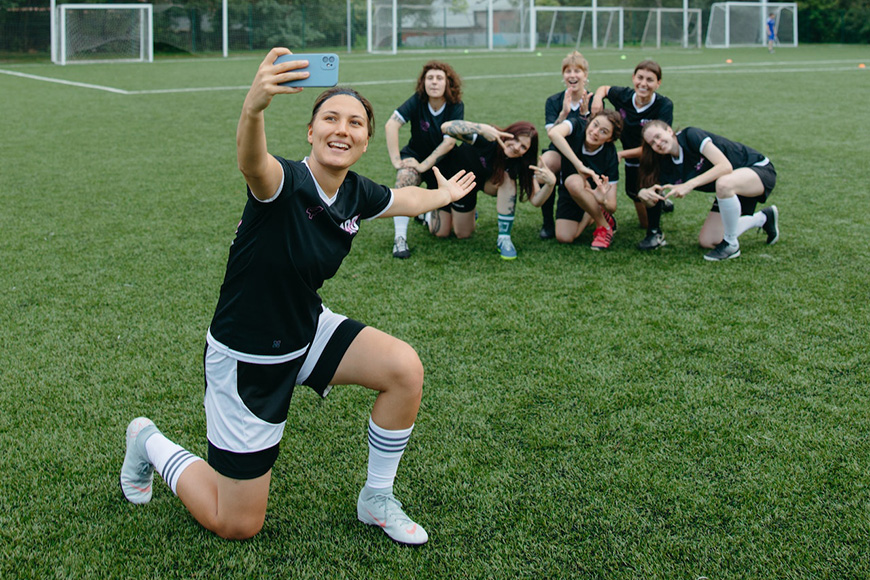
Credit: Anastasia Shuraeva
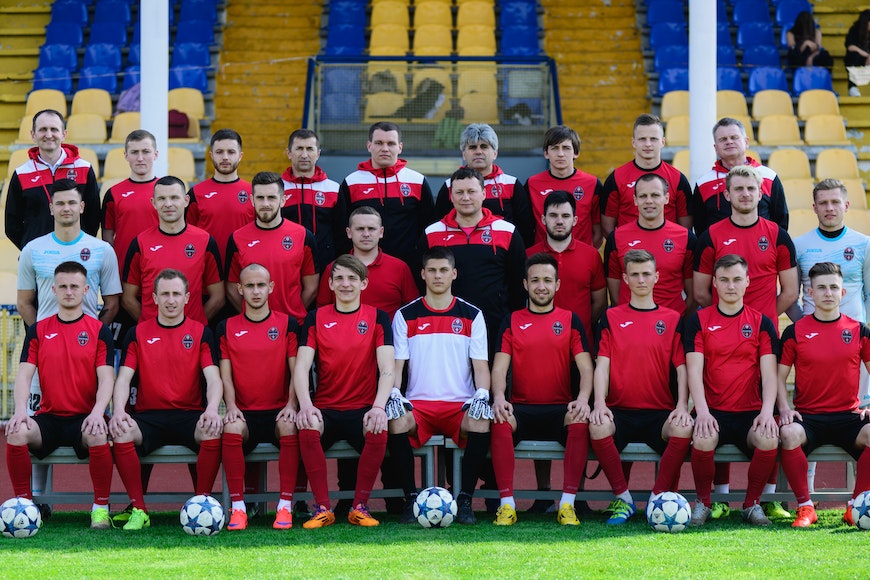
Credit: володимир король
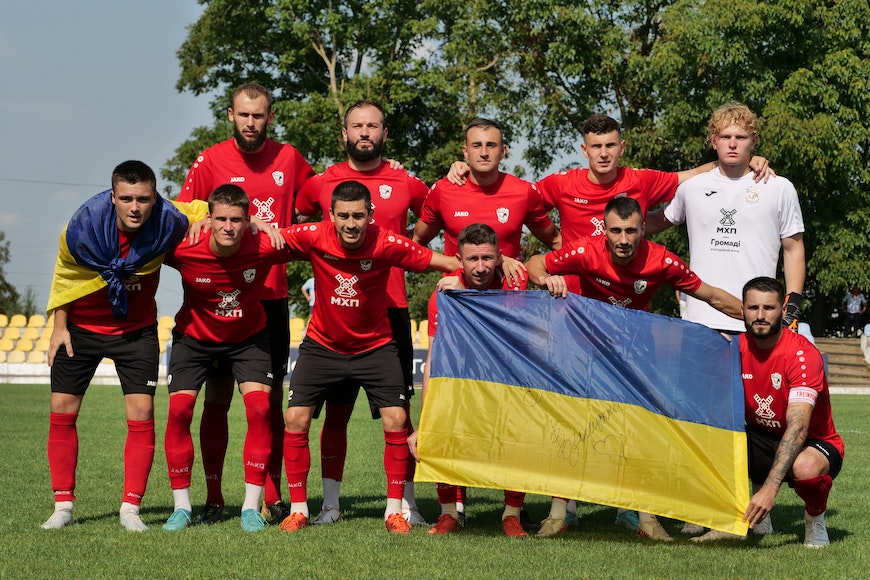
Credit: володимир король
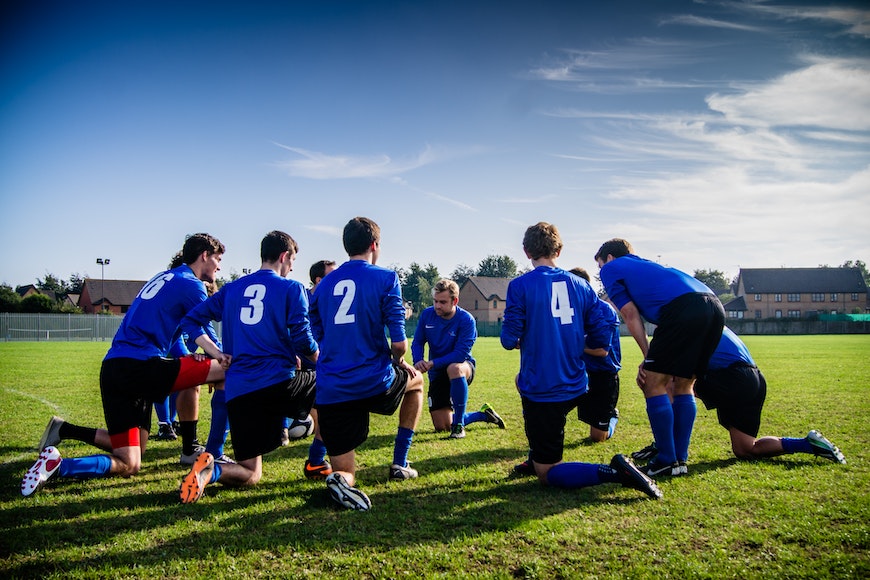
Credit: Pixabay
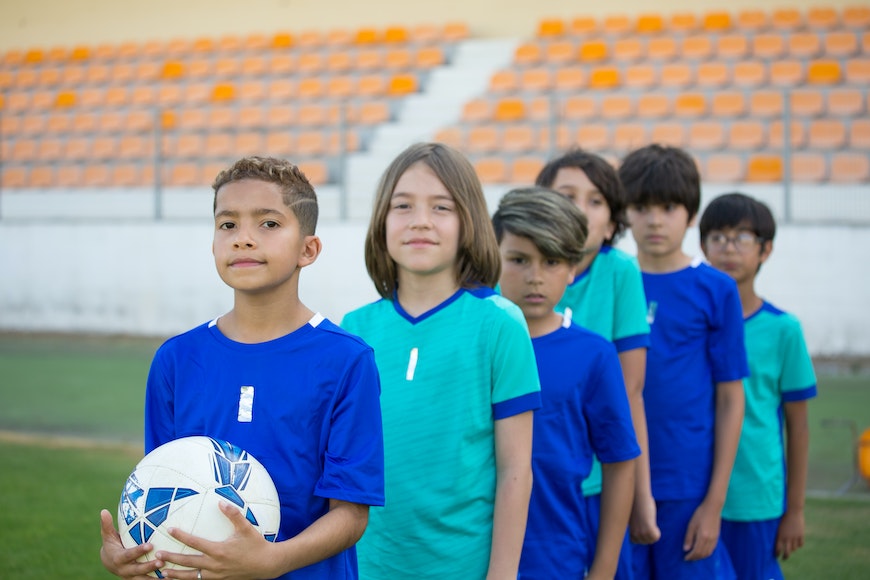
Credit: Kampus Production
Overcoming Challenges in Soccer Photography
Here are a few extra tips to overcome the challenges of soccer photography.
Anticipating Play Action
- You need to know and understand the game so you can anticipate key moments.
- If possible, never stay in the same place. Change position throughout the game and find the best spots for corner kicks, free kicks, and penalties.
- Warming time is great to capture goalies stopping the ball.
- Try to catch the players when they’re looking ahead – not at the ball.
Weather Considerations
- Use weather-proof equipment and buy extra protections for rainy days or adverse conditions.
- Adjust the settings according to the weather. The lighting is different on overcast days, rain, or direct sunlight.
Etiquette and Safety
- The main rule is – safety first!
- Respect the rules and regulations of the venue.
- Staying alert if the ball approaches. Not just to save your equipment but also not to be in the way of the players.







